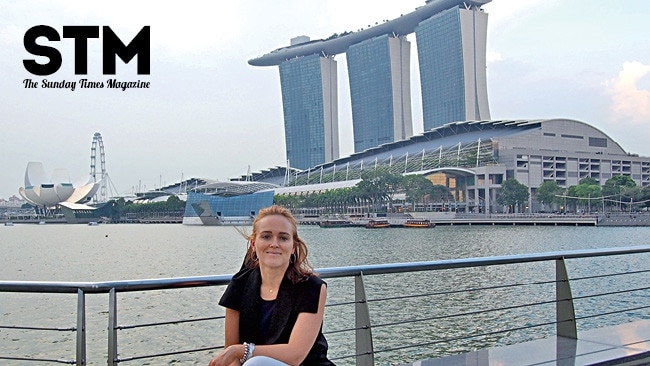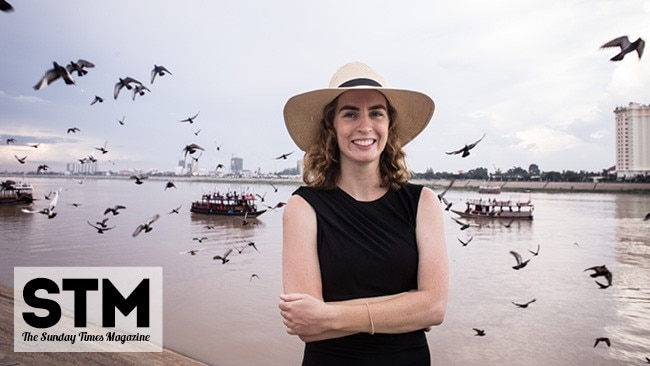Yes, Yoko Ono approves
ALL you need is love in a Japanese John Lennon museum, writes Diana Plater of how the Saitama Super Arena chose a shrine to a Beatle over an aquarium.

WHEN the Saitama Super Arena decided a "culture and amusement space" was needed in its complex, 30km north of Tokyo, the short list came down to an aquarium or a John Lennon museum.
The former Beatle won. After all he was married to one of Japan's most famous exports, Mrs (as everybody calls her) Yoko Ono.
That's not to say she was a particularly popular person in Japan during Beatlemania. She was the one who was meant to have broken up the Beatles.
But visitors to the museum see a different picture and leave with a more positive viewpoint, according to its general manager, Mr Junichi Mizusawa.
Twenty three couples were so touched by John and Yoko's love story that they even got married at the museum, asking Mr Mizusawa to be their wedding witness. As there's no longer a restaurant for the receptions though, they can't hold any more weddings there.
The museum opened in October 2000, the 60th anniversary of his birth, and so far around 465,000 people have visited, 70 per cent of them younger than 30 and five per cent foreigners.
Part of a huge sports arena, local authorities were concerned that when a sports game wasn't on there would be little for visitors to do. More than 100 suggestions were made and it came down to an aquarium or a John Lennon museum ("because Saitama prefecture doesn't face the sea").
"(We) anticipated Mrs Ono would not accept the plan," Mr Mizusawa said. "But she accepted. She didn't mind where the museum is located but the spirit of John Lennon must be conveyed."
It's only one of two legally authorised museums, he said, to the Beatles. The other, naturally enough, is in Liverpool.
"John Lennon is very popular throughout the world we understand," he said.
He, himself, was not such a "crazy" fan, but after he came to work at the museum, his views changed. As he was around the same age as Lennon the Beatles had always been part of his life and of course "John Lennon had a Japanese wife".
Asked what the Japanese thought of "Mrs" Ono, he said that was difficult to answer.
"The Japanese crazy fans still say no against Yoko. When they visit the museum though they change, they come to like Yoko. They understand how deeply John Lennon loved Yoko, and how deeply Yoko supported John."
And he says, the three other Beatles grew and established their careers in other ways when the Beatles broke up, which was not only Yoko's doing.
"This museum has a very good role to give a message about John and Yoko. What was the real happiness for Lennon? That's the question for visitors."
So what was John and Yoko's legacy?
"To love everybody and to live together with somebody is important... Love makes it good to get over differences."
According to the museum's brochure it was also designed in the hope of accurately passing on his life and works to the 21st century, saying he'd influenced the world immensely, through his music, art and peace campaigns.
The museum has nine zones, where nearly 130 memorabilia from Yoko's collection are on exhibit, as well as a theatre, where you're given a seven-minute introduction.
While it's possible to whiz through the museum in one and a half hours, some stay for half a day. It includes a replica of the Cavern Club nightclub where the Moptops played in Liverpool in the 60s, as well as the lounge room of John and Yoko's apartment in the Dakota building in New York (outside of which he was shot dead in 1980).
Exhibits include Lennon's school exercise books with comments by his teacher and showing his inability like so many others to spell the word, "their". His report card from when he was nine years old is also predictable. It says he "will have to take more care".
There's also examples of Yoko's avant garde performance art, including a telephone that rings once a year. The lucky passer by then gets to talk to her, personally.
At the end there's a space known as the Final Room, where visitors can sit on perspex chairs and read lines from 28 of Lennon's songs up on a screen and "feel his spirit in a quiet environment, reflecting their own lives through them", according to the museum's brochure. Mr Mizusawa says visitors come "and shed tears". At the museum lounge they can "bask in the afterglow of John's spirit".
And, while the exhibition's story comes to an end when Lennon dies, as Mr Mizusawa says, "the music is for ever".
The writer was a guest of the Saitama Prefectural government and the Japan National Tourist Organisation, flying Japan Airlines.



